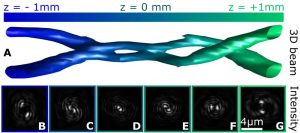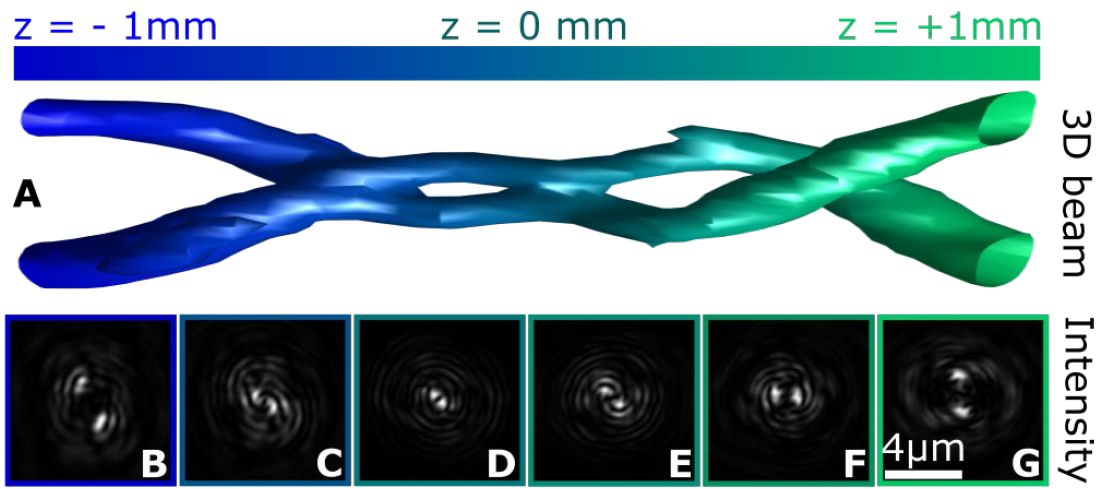ARCNL researchers report on helical soft-X-ray beams
Controlling the properties of light is of great importance for many areas of physics, including imaging and nanolithography. But for short wavelengths, such as soft-X-ray radiation, such control over especially the phase of light has remained elusive. In a paper published in Science Advances on Friday, 14 February, ARCNL researchers Lars Loetgering and Stefan Witte, together with colleagues from Germany and the USA, report on a method that enables the generation of soft-X-ray beams with controlled orbital angular momentum (OAM). OAM is a property of light in which the phase of a light beam rotates around the beam axis. The ARCNL team now demonstrates that, by inserting a specially designed structure into the beam path, the light can be diffracted in such a way that its OAM properties are modified. Being able to control OAM of light is an important first step; it will give researchers access to the angular structure of the soft-X-ray beam.
Loetgering et al used this new method to generate so-called helical beams of soft-X-ray radiation, in which the intensity distribution of light rotates around its axis upon propagation. They employed a special imaging approach called ptychography to characterize the intensity and phase properties of these helical beams in great detail. Furthermore, they demonstrated the potential of these special beams for high-resolution microscopy, by using them to image a cross-section of an integrated circuit at 30 nanometer spatial resolution.

Reference:
Lars Loetgering, Margarita Baluktsian, Kahraman Keskinbora, Roarke Horstmeyer, Thomas Wilhein, Gisela Schütz, Kjeld Eikema, Stefan Witte, Generation and characterization of focused helical x-ray beams, Science Advances, February 14, 2020, 6, (7), eaax8836








